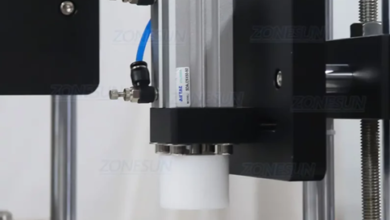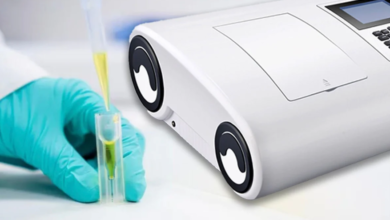
How Ohaus Analytical Balances Ensure Accuracy in Lab Results
Introduction
Laboratory accuracy depends heavily on precise measurement tools, and analytical balances stand at the forefront of this critical requirement. Ohaus has established itself as a leading manufacturer of analytical balances, delivering instruments that consistently provide reliable and accurate results across diverse laboratory environments.
The significance of measurement precision cannot be overstated in modern laboratories. Whether conducting pharmaceutical research, chemical analysis, or quality control testing, scientists rely on analytical balances to deliver measurements with exceptional accuracy. Ohaus analytical balances have earned recognition for their ability to maintain precision standards that meet and exceed industry requirements.
These sophisticated instruments represent decades of engineering excellence and technological advancement. Every Ohaus analytical balance incorporates multiple layers of precision-enhancing features designed to eliminate measurement errors and ensure reproducible results.
Understanding Analytical Balance Precision
Analytical balances operate on fundamental principles of precision weighing that require extraordinary attention to detail. These instruments typically measure masses with readabilities of 0.1 mg or better, making them essential for applications requiring extreme accuracy.
The precision of analytical balances stems from their internal design and construction. Ohaus balances utilize electromagnetic force restoration technology, which converts the gravitational force acting on a sample into an electrical signal. This conversion process enables the balance to detect minute mass differences with remarkable consistency.
Temperature stability plays a crucial role in analytical balance performance. Ohaus incorporates advanced temperature compensation algorithms that automatically adjust readings based on ambient temperature fluctuations. This feature ensures that measurements remain accurate even when laboratory conditions vary throughout the day.
Vibration isolation represents another critical aspect of precision weighing. Ohaus analytical balances feature robust construction with integrated vibration filtering systems that minimize the impact of external disturbances on measurement accuracy.
Ohaus Technology and Innovation
Ohaus has continuously invested in research and development to advance analytical balance technology. Their commitment to innovation has resulted in numerous patented features that enhance measurement accuracy and user experience.
The SmartSens infrared sensors incorporated in many Ohaus models eliminate the need for manual door operation, reducing air currents that could affect measurements. These sensors detect user proximity and automatically open the weighing chamber doors, maintaining environmental stability while improving workflow efficiency.
Advanced microprocessor technology enables Ohaus balances to perform complex calculations and data processing in real-time. These processors continuously monitor multiple parameters simultaneously, including temperature, humidity, and electrical stability, making automatic adjustments to maintain optimal performance.
Ohaus proprietary software provides intuitive user interfaces that simplify operation while maintaining access to advanced features. The software includes built-in applications for various weighing modes, statistical analysis, and data management capabilities that enhance laboratory productivity.
Key Features That Guarantee Accuracy
Ohaus analytical balances incorporate multiple features specifically designed to ensure measurement accuracy. The internal calibration system automatically calibrates the balance at predetermined intervals, eliminating the need for manual calibration procedures that could introduce human error.
Dual-range functionality allows users to optimize measurement capacity and readability based on specific application requirements. This flexibility ensures that samples of varying sizes can be weighed with maximum precision throughout the entire measurement range.
The MonoBloc weighing cell represents a significant advancement in balance construction. This single-piece design eliminates potential sources of measurement error associated with multi-component systems, providing enhanced stability and repeatability.
Anti-static ionization systems neutralize electrostatic charges that could affect measurement accuracy. These systems automatically detect and eliminate static charges on samples and containers, preventing measurement drift caused by electrostatic forces.
Draft shields with multiple access points facilitate sample handling while maintaining environmental protection. Ohaus designs these shields to minimize air currents while providing convenient access for various sample sizes and laboratory procedures.
See also: Quality Assurance in Custom Software: Zchwantech’s Best-Practice Approach
Calibration and Maintenance Excellence
Regular calibration ensures analytical balance accuracy over extended periods of use. Ohaus balances feature automated calibration routines that can be scheduled to occur at specific intervals or triggered by environmental changes.
The internal calibration weights undergo rigorous testing and certification to ensure traceability to international standards. These weights maintain their mass stability over thousands of calibration cycles, providing consistent reference points for accuracy verification.
Maintenance procedures for Ohaus analytical balances are designed for simplicity and effectiveness. The modular construction allows easy access to critical components for cleaning and servicing without compromising measurement accuracy.
Diagnostic features provide real-time monitoring of balance performance parameters. These systems alert users to potential issues before they affect measurement accuracy, enabling proactive maintenance scheduling.
Environmental Factors and Control
Environmental conditions significantly impact analytical balance performance. Ohaus balances incorporate multiple systems to monitor and compensate for environmental variations that could affect measurement accuracy.
Temperature fluctuations can cause thermal expansion of balance components, leading to measurement drift. Ohaus addresses this challenge through thermal compensation algorithms and temperature-stable materials in critical components.
Humidity control becomes essential in environments with varying moisture levels. Advanced models include humidity sensors that monitor ambient conditions and adjust measurement parameters accordingly.
Air currents represent one of the most common sources of measurement error in analytical balancing. Ohaus draft shields and chamber designs minimize air movement effects while maintaining user accessibility.
Vibration isolation systems protect against mechanical disturbances from laboratory equipment and building movement. These systems include both passive and active isolation technologies depending on the specific model and application requirements.
Quality Assurance in Laboratory Settings
Ohaus analytical balances support comprehensive quality assurance programs through detailed documentation capabilities and audit trail features. These systems maintain records of all measurements, calibrations, and maintenance activities.
Good Laboratory Practice (GLP) compliance features ensure that Ohaus balances meet regulatory requirements for pharmaceutical, clinical, and research applications. Built-in data integrity controls prevent unauthorized modifications to measurement records.
Traceability features link every measurement to certified reference standards, providing complete documentation chains for quality audits. This capability proves essential for laboratories operating under strict regulatory oversight.
User management systems control access to balance functions based on individual authorization levels. These controls prevent unauthorized changes to calibration settings or measurement parameters that could compromise accuracy.
Real-World Applications and Benefits
Pharmaceutical laboratories depend on Ohaus analytical balances for drug formulation and quality control testing. The precision required for active ingredient quantification demands the accuracy levels that Ohaus balances consistently deliver.
Chemical analysis applications benefit from the stability and repeatability of Ohaus instruments. Whether measuring reagents for synthesis or analyzing product purity, these balances provide reliable results that support confident decision-making.
Research institutions utilize Ohaus analytical balances for diverse applications ranging from materials science to biological research. The versatility and accuracy of these instruments support innovative research across multiple disciplines.
Quality control laboratories in manufacturing environments rely on Ohaus balances for incoming material inspection and final product verification. The robustness and reliability of these instruments ensure consistent performance in demanding industrial settings.
Comparative Analysis with Other Brands
Ohaus analytical balances distinguish themselves through superior build quality and innovative features. When compared to competitors, Ohaus instruments consistently demonstrate better long-term stability and lower maintenance requirements.
The total cost of ownership for Ohaus balances often proves lower than alternatives due to reduced calibration frequency and extended service intervals. This economic advantage makes Ohaus balances attractive for budget-conscious laboratories without compromising performance.
User satisfaction surveys consistently rank Ohaus analytical balances highly for ease of use and reliability. The intuitive interfaces and robust construction contribute to positive user experiences across diverse laboratory environments.
Performance benchmarks demonstrate that Ohaus balances meet or exceed specifications throughout their operational lifespan. This consistency ensures that laboratories can depend on accurate results year after year.
Future of Analytical Balance Technology
Emerging technologies promise to further enhance analytical balance accuracy and functionality. Ohaus continues to invest in research and development to incorporate these advances into future product generations.
Artificial intelligence and machine learning algorithms may soon optimize balance performance automatically based on usage patterns and environmental conditions. These technologies could predict maintenance needs and prevent accuracy degradation before it occurs.
Connectivity enhancements will enable seamless integration with laboratory information management systems and cloud-based data platforms. This connectivity will streamline data management and enable remote monitoring capabilities.
Advanced sensor technologies may provide even greater precision and stability while reducing the impact of environmental factors on measurement accuracy. These developments will expand the applications where analytical balances can provide reliable results.
Certified Material Testing Products (Certified MTP) is a leading supplier of construction materials testing equipment and laboratory supplies in the United States. They offer a comprehensive range of products for testing concrete, asphalt, aggregate, soil, and cement, catering to both field and laboratory applications. However, regardless of whether they are preferred or not, the underlying concept behind these tools is similar: achieving a polished, shiny, and permanent effect. Whether new to stucco or a seasoned pro, investing in quality tools and learning the nuances of their use is what will help you perfect your craft.
Frequently Asked Questions
Q: How often should Ohaus analytical balances be calibrated? A: Calibration frequency depends on usage patterns and application requirements. Ohaus balances with internal calibration should be calibrated daily or when environmental conditions change significantly. External calibration should be performed according to laboratory SOPs, typically weekly or monthly.
Q: What is the typical measurement uncertainty for Ohaus analytical balances? A: Measurement uncertainty varies by model and application conditions. Most Ohaus analytical balances achieve measurement uncertainties of ±0.1 mg or better under optimal conditions. Factors such as sample size, environmental stability, and calibration frequency affect overall uncertainty.
Q: Can Ohaus analytical balances be used in controlled environments? A: Yes, many Ohaus analytical balance models are designed for use in controlled environments including cleanrooms and climate-controlled laboratories. Specific models may require additional accessories or modifications for certain controlled environment applications.
Q: How do I minimize measurement errors when using Ohaus analytical balances? A: To minimize measurement errors, ensure proper balance leveling, allow adequate warm-up time, use appropriate sample containers, minimize air currents, and maintain stable environmental conditions. Regular calibration and proper handling techniques also contribute to measurement accuracy.
Q: What maintenance is required for Ohaus analytical balances? A: Regular maintenance includes cleaning the weighing chamber and pan, checking level adjustment, performing calibration verification, and inspecting door mechanisms. Ohaus provides detailed maintenance schedules and procedures in the user manuals for each model.
Q: Are Ohaus analytical balances suitable for regulatory compliance? A: Yes, Ohaus analytical balances are designed to meet various regulatory requirements including FDA, GMP, and ISO standards. Many models include features specifically designed to support compliance documentation and audit trails.
Conclusion
Ohaus analytical balances represent the pinnacle of precision weighing technology, delivering accuracy levels that meet the demanding requirements of modern laboratories. Through continuous innovation and attention to detail, Ohaus has created instruments that consistently provide reliable results across diverse applications.
The combination of advanced technology, robust construction, and user-friendly design makes Ohaus analytical balances the preferred choice for laboratories worldwide. From pharmaceutical research to quality control applications, these instruments deliver the precision and reliability that scientists depend on for accurate results.
As laboratory requirements continue to evolve, Ohaus remains committed to advancing analytical balance technology. Their investment in research and development ensures that future generations of Ohaus balances will continue to set new standards for accuracy and performance in laboratory instrumentation.
The proven track record of Ohaus analytical balances in ensuring accuracy makes them an essential investment for any laboratory serious about measurement precision. With proper calibration and maintenance, these instruments provide years of reliable service while maintaining the accuracy levels that modern science demands.




